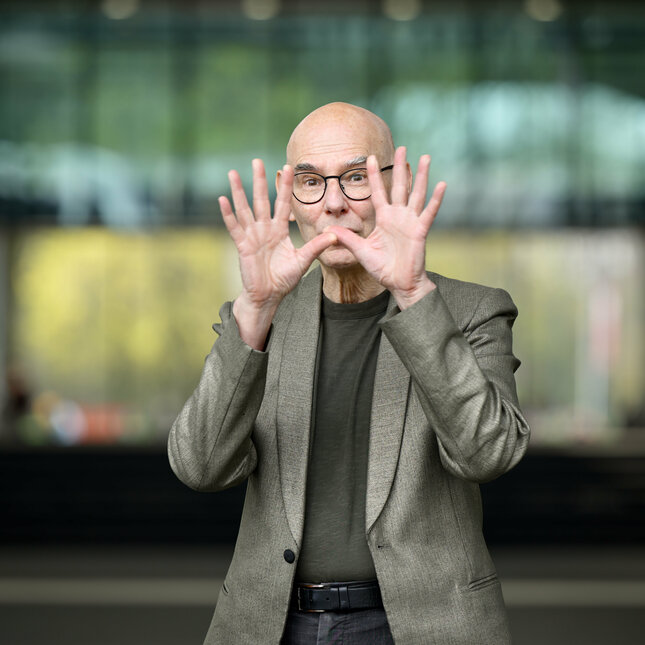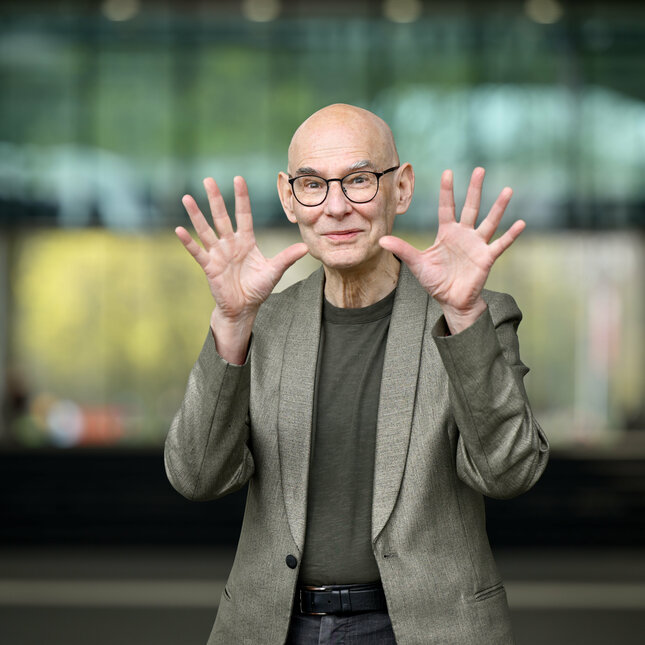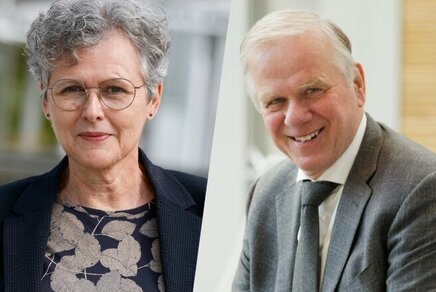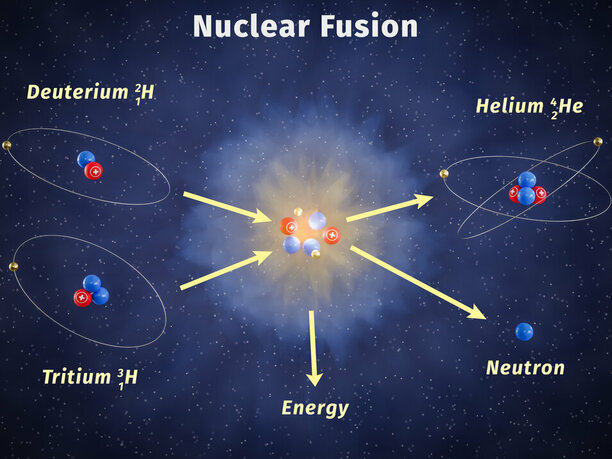Niek Lopes Cardozo: ‘Nuclear fusion is no longer 30 years away’
Nuclear fusion – a method that could produce a significant amount of the energy we’ll need and use in the future – looks destined for great things, according to retiring full Professor Niek Lopes Cardozo.
![[Translate to English:] [Translate to English:]](https://assets.w3.tue.nl/w/fileadmin/_processed_/b/d/csm_Lopes%20Cardozo%20Banner%20image%20BvOF%202024_0320_CZW%20Niek%20Lopes%20Cardozo_03f54699bf.jpg)
Our world runs on energy. With a growing population and our new energy-hungry technologies, energy demands are only set to grow. As we move away from these pollutant fuels, renewable options are being promoted as the order of the day. However, renewables may not be able to completely replace fossil fuels in the long term. With significant investments, a helping hand may soon come from nuclear fusion energy. But what lies ahead for this energy field that is exploding in popularity. On the occasion of his retirement lecture, Professor Niek Lopes Cardozo reflects on why nuclear is hot now and why TU/e is leading the way in training the next generations of nuclear physicists.
“Fusion can be a critical piece of our energy future.” That’s what John Kerry – Special Presidential Envoy for Climate from the US Department of State – said during his keynote speech on an inclusive fusion energy future at COP28, the 2023 United Nations Climate Change Conference that took place in Dubai.
But when will that energy future be? And how long do we have to wait? Within the field of nuclear fusion, the historical quip is that fusion is always 30 years away.
“In the past, it was always thirty years, or even more, but in recent years there’s more evidence to suggest that this won’t be the case. It will be sooner,” says Niek Lopes Cardozo to me as we start our discussion on the nuclear fusion and his long and successful career in the field. Lopes Cardozo retires from his role as full Professor on the science and technology of nuclear fusion in the Department of Applied Physics and Science Education this month.
Value must lead
Sitting in Lopes Cardozo’s office in the Flux building on the TU/e campus is an immersion in the field of nuclear fusion. Perched on the wall adjacent to the large meeting table in the room is a colorful artist’s impression of a tokamak – a device used to confine plasmas to help produce fusion energy, which ensures that nuclear fusion technology dominates the room.
We need a revolution in how we develop technologies, the speed with which we do so, and then how fast we get them out into society.
“Kerry is right about fusion playing a key role in our energy future,” says Lopes Cardozo. “In the same speech he also highlighted that it has the potential to revolutionize our world. But before that, we need a revolution in how we develop technologies, the speed with which we do so, and then how fast we get them out into society.”
According to Lopes Cardozo, the answer is to spend more earlier to save more in the future, and all of this should be done by backing several technological options at the same time. “This amounts to a value-led approach, rather than the traditional science-led efforts. We need the nuclear fusion tech to reach the market faster.”
Private funding to the fore
For nuclear fusion, there are signs of change when it comes to having more options for the fusion technologies of the future.
“There’s been an upsurge in the amount of private funding being made available to private companies, so much so that it now exceeds the funding provided by governments,” notes Lopes Cardozo.
To put this in perspective; over the last two years in the US, the private sector raked in $5.9 billion by the end of 2023, in comparison to just $271 million in public funding. Not to be left behind though, major governments, including the US and Germany, are looking at ways to complement these private investments. In Germany, for instance, the Federal Ministry of Education and Research (BMBF) wants to build the country’s first nuclear fusion power plant by 2040.
Why so hot?
So, why is the field of nuclear fusion so hot for investors right now?
The theoretical will soon become the applicable.
“It’s a simple answer – there have been major technological advancements in nuclear fusion, and this is being viewed as tipping point in the field where the theoretical will soon become the applicable,” says Lopes Cardozo. “And the leading designs have been the tokamak and the laser-driven inertial confinement design, but we see today that other concepts come to the fore, too. In addition, there have been some recent and significant technological advances in nuclear fusion.”
First ignition
First, in December 2022 and for the first time, researchers at the US National Ignition Facility (NIF) achieved something that’s in the name of the facility – ignition. “This is when there is a net energy out or where the fusion reactions generate enough power to sustain the conditions needed for fusion,” says Lopes Cardozo.
By means of the inertial confinement approach, NIF engineers fired 192 lasers at a pea-sized gold cylinder which contained a frozen pellet of deuterium and tritium. Temperatures increased to those encountered inside stars, and the two hydrogen isotopes started to fuse together, forming helium atoms, and releasing excess energy in the process.
Repeated success
Second, fast forward to the end of 2023, and the same facility recorded its fourth successful ignition. Such experimental repetition has garnered the attention of the Joe Biden administration, as demonstrated by John Kerry’s COP28 speech. “On the back of repeated successes, there is a wave of optimism about NIF’s laser-based fusion approach,” notes Lopes Cardozo. “But there are some inefficiency issues.”
The main issue that Lopes Cardozo hints at relates to the energy needed to power the lasers that are fired at the atoms in the first place. “At the moment, the laser system is not very efficient. 99% of the energy that goes into firing the system is lost before it even reaches the target.”
Multiple problems
What’s evidently clear from the pursuit of nuclear fusion is that multiple problems need to be solved at the same time.
“We need new materials to build the reactors, and then we need the actual materials themselves to generate the fusion energy – whether it’s using pellets of atoms or a plasma. Then you need advanced lasers and/or superconductors. And to help build the reactors and numerically study reactions, we need the best computer models possible,” Lopes Cardozo points out. “For all of this to happen, we need the best people, with the best education, and the best training.”

Leading in education
While there have been impressive advancements in nuclear fusion technologies and unprecedented investment of late, the true benefits of such efforts will only come to bear if a workforce with the right skills is available to implement and maintain fusion technologies.
“For all of this to happen, we need the best people with the best education, and the best training,” says Lopes Cardozo.
Dennis Whyte, renowned MIT professor in magnetic confinement-based fusion technologies, has been quoted as saying that “One of the few things that Europe is getting right is education.”
“Professor Whyte is 100% correct, and TU/e’s nuclear fusion education program is a testament to this. It’s the best and biggest in Europe,” says Lopes Cardozo with immense pride.
TU/e’s nuclear fusion education program is the best and biggest in Europe.
Over the past five years, an average of 30 students has in TU/e’s specialized master’s program on the science and technology of nuclear fusion. “There are other nuclear fusion programs around Europe, such as in Prague, Rome, and York. For the rest of the world, there are not really any other big options,” points out Lopes Cardozo.
And that’s why TU/e’s dedicated program is so important. Lopes Cardozo: “In the Netherlands, we have the only fusion master’s program. Students from other universities come to us for their nuclear fusion education. Each year, the student group is made up of about one third from TU/e, one third from other Dutch universities, and one third from around the world.”

The need for continuity and more graduates
How many graduates stay in the nuclear fusion field though? “In the end, about one third stay in the field of nuclear fusion, while the rest deploy their skills in other fields,” Lopes Cardozo says.
With the nuclear fusion age seemingly imminent, the central problem lies in training enough nuclear fusion scientists to ensure that we have a nuclear fusion age in the first place.
100 million workers needed
Lopes Cardozo: “If we want nuclear fusion to make up a sizable fraction of the energy system, we are talking about some 10,000 power plants. The industry required to build and operate them represents order 100 million jobs. While only a fraction of that workforce needs to be highly specialized nuclear fusion engineers, that is still a big number!”
To put this workforce number in perspective, in 50 years, it’s likely that the population of the world will be 10 billion. This means that between 1% and 2% of the world’s population will work in the field of nuclear fusion. And these workers will be needed all over the world.
Already though, the effect of TU/e’s nuclear fusion education program is being felt around the world. “Our students do their internships all over the world. They go to government labs and industry in countries such as Japan, the US, Australia, Canada, and the UK – apart from almost all EU countries of course,” says Lopes Cardozo.
People try to keep their students close to home. We do the opposite – we send them around the world.
That’s a difference with other education programs that Lopes Cardozo is keen to highlight. “People try to keep their students close to home. We do the opposite – we send them around the world. They immediately become part of the nuclear fusion chase, and they spread word of TU/e’s education approach in the process.”

Keeping the faith
Nuclear fusion can’t be 30 years away forever, and eventually the scientific endeavors of so many will be utilized by a small few to make it happen. And Lopes Cardozo feels that it’s no longer a pipe dream it’s approaching “probable”.
“I think we’ll see the first working reactors within 15 years or so, before the year 2040,” says Lopes Cardozo.
Such optimism is fueled by the collection of transformations that the field has seen over the last two years or so, with private investment complementing scientific discoveries, and governments starting to recognize the key role that nuclear fusion could play in the energy transition.
I have faith in what we are doing. We are on the right path.
In COP28 statement John Kerry also indicated that we are “edging ever closer to a fusion powered reality”. This may sound overly optimistic given the technological problems that must be solved, but Lopes Cardozo is confident that Kerry’s statement will prove right.
“I have faith in what we are doing,” says Lopes Cardozo as the large artist’s impression of the ITER intently watches on as we conclude our chat. “I see what’s happening here at TU/e in terms of research and excellence in education. I see what is happening around the world, and what is happening with fusion startups. We are on the right path.”
Details on the valedictory lecture
Professor Niek Lopes Cardozo delivers his valedictory or retirement lecture on Thursday May 23rd in the Blauwe Zaal of the Auditorium building on the TU/e campus.
His lecture is entitled “Fusion Power, Really? A gift from the super-rich? Should we accept?”.
Further information on the lecture and registering to be there can be found here.
Media contact
Latest news




